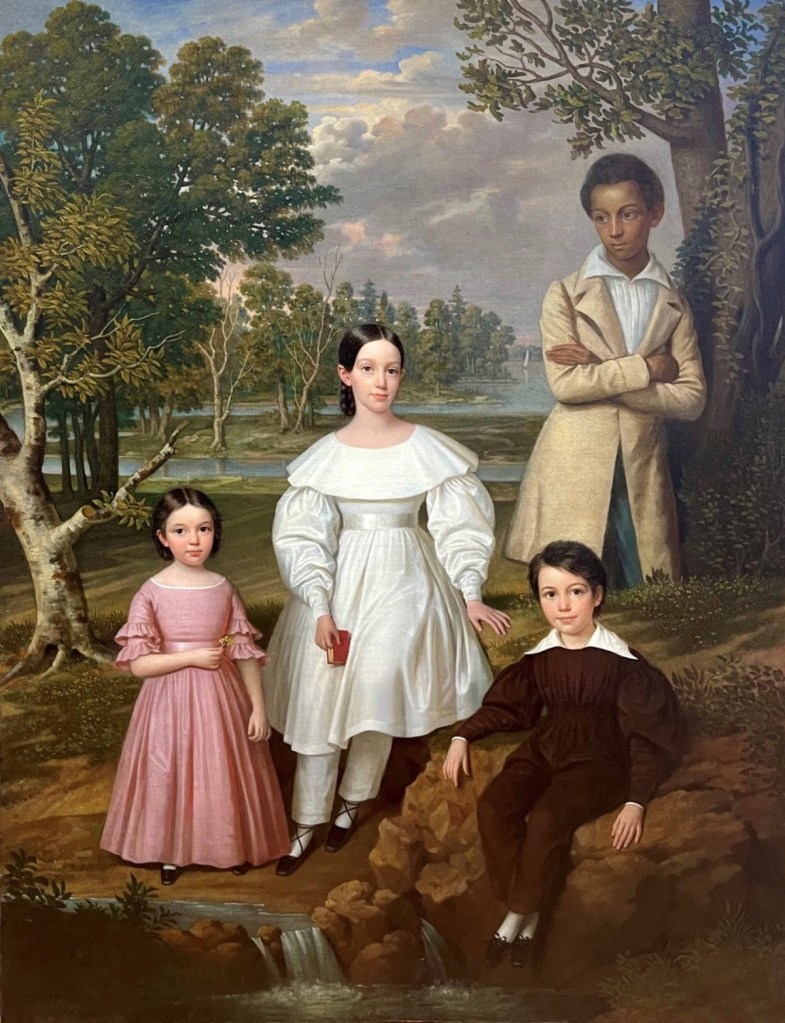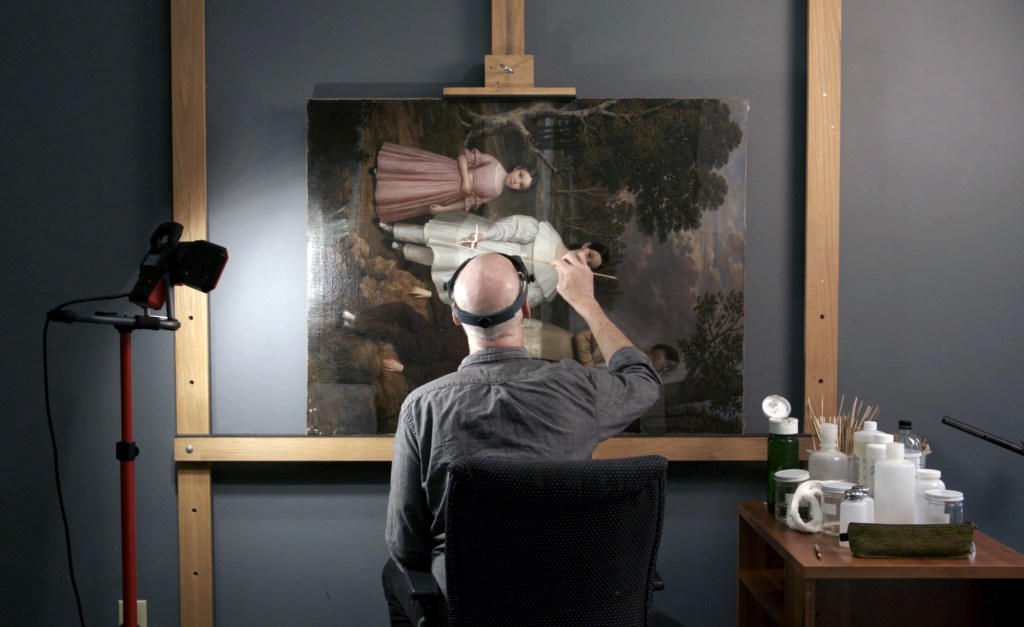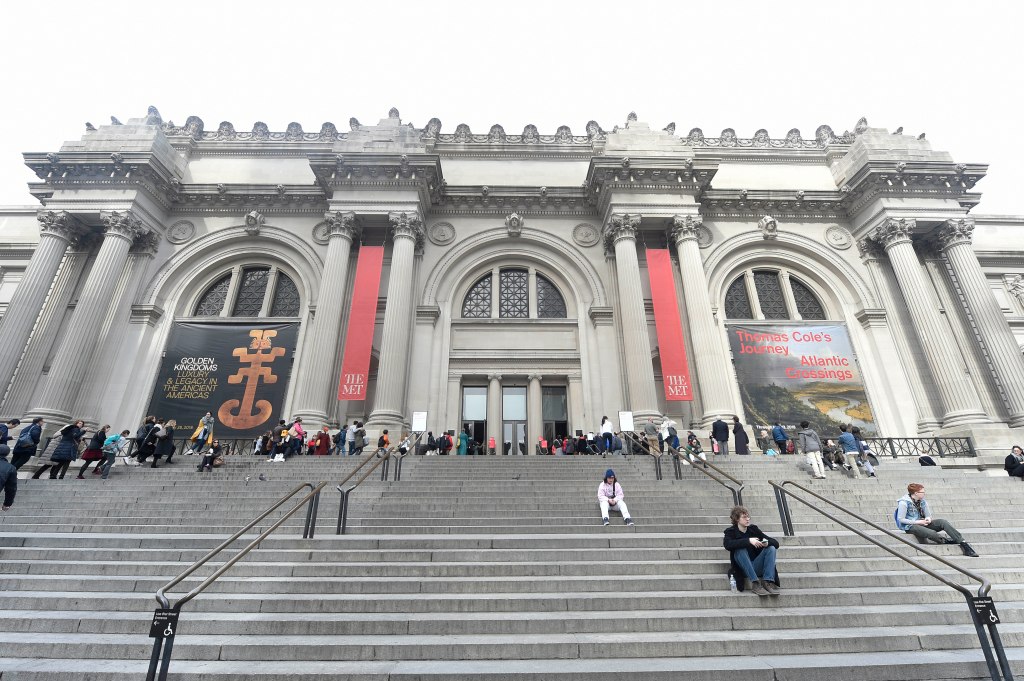Painting covering up enslaved boy restored, to hang in Met
A 19th-century family portrait that was altered to cover an enslaved teenager has been restored to its original version.
The painting, initially etched on canvas, is now set to hang in the Metropolitan Museum of Art this fall after half a century in hiding.
The Jacques Guillaume Lucien Amans attributed work from 1837, titled “Bélizaire and the Frey Children,” depicts the three kids of wealthy New Orleans French Quarter banker Frederick Frey alongside 15-year-old Bélizaire — whom the family reportedly purchased as a 6-year-old.
“The Frey portrait shows a surprising intimacy between the four children, suggesting that Bélizaire was a valued member of the household, despite his enslaved status,” according to ArtNet.
“But at some point around the turn of the century, someone painted over Bélizaire, not only erasing him from the Frey family history but obscuring a rare example from the era of a realistic portrait of an enslaved person.”

The altered portrait was kept by the Frey clan for over a century. In 1972, a descendant of the family matriarch, Coralie D’Aunoy Frey, donated the painting to the New Orleans Museum of Art and reportedly explained that Bélizaire was erased.
“However, the institution chose not to do anything with that information,” the outlet reported. “The painting languished in museum storage until 2005, when it was deaccessioned at auction, selling for $7,200 at Christie’s New York.”
Then museum director John Bullard rationalized the decision because, according to him, the work “was not in exhibitable condition” and that neither the artist nor children were known at the time, the New York Times reported.
“I think in hindsight it was a mistake,” he told the paper.

The painting’s restoration began during the change of hands in 2005 when it was sold to a Virginia antique collector. It finally reached Baton Rouge, Louisiana, art collector and Creole descendant Jeremy K. Simien for an undisclosed price in 2021.
It was under his ownership that the portrait was fully brought back to its original conception.
The Met announced its acquisition of “Bélizaire and the Frey Children” from Simien earlier this month, calling the artwork “one of the rarest and most fully documented American portraits of a black individual depicted with the family of his white enslaver.”
“The deeply compelling and rare painting carries immense historical and artistic significance, and represents an important milestone in our ongoing commitment to sharing profound stories of identities and place,” said Max Hollein, the Met’s Marina Kellen French Director and CEO. “As well as memory and erasure.”

Simien told the Times he had considered returning the painting to the NOLA museum but became increasingly frustrated with the glacial pace of its acquisition.
As a way to connect closer to his own heritage, Simien also launched a campaign to trace the ancestry of Bélizaire.
“One thing that I must say is that this painting has reassured me of the importance of finding lost objects and bringing hidden or covered history to light,” he wrote.
During the lineage research, it was discovered that Bélizaire had actually outlived the Frey children.
Sisters Elizabeth and Léontine succumbed to yellow fever in 1837 and their brother Frederick died some years later. Bélizaire survived into the Civil War era and in 1861 was listed on inventories in New Orleans — shortly before Union forces captured the city a year later.
After that, though, the enslaved boy-turned-man’s fate is a mystery.
Read the full article Here


